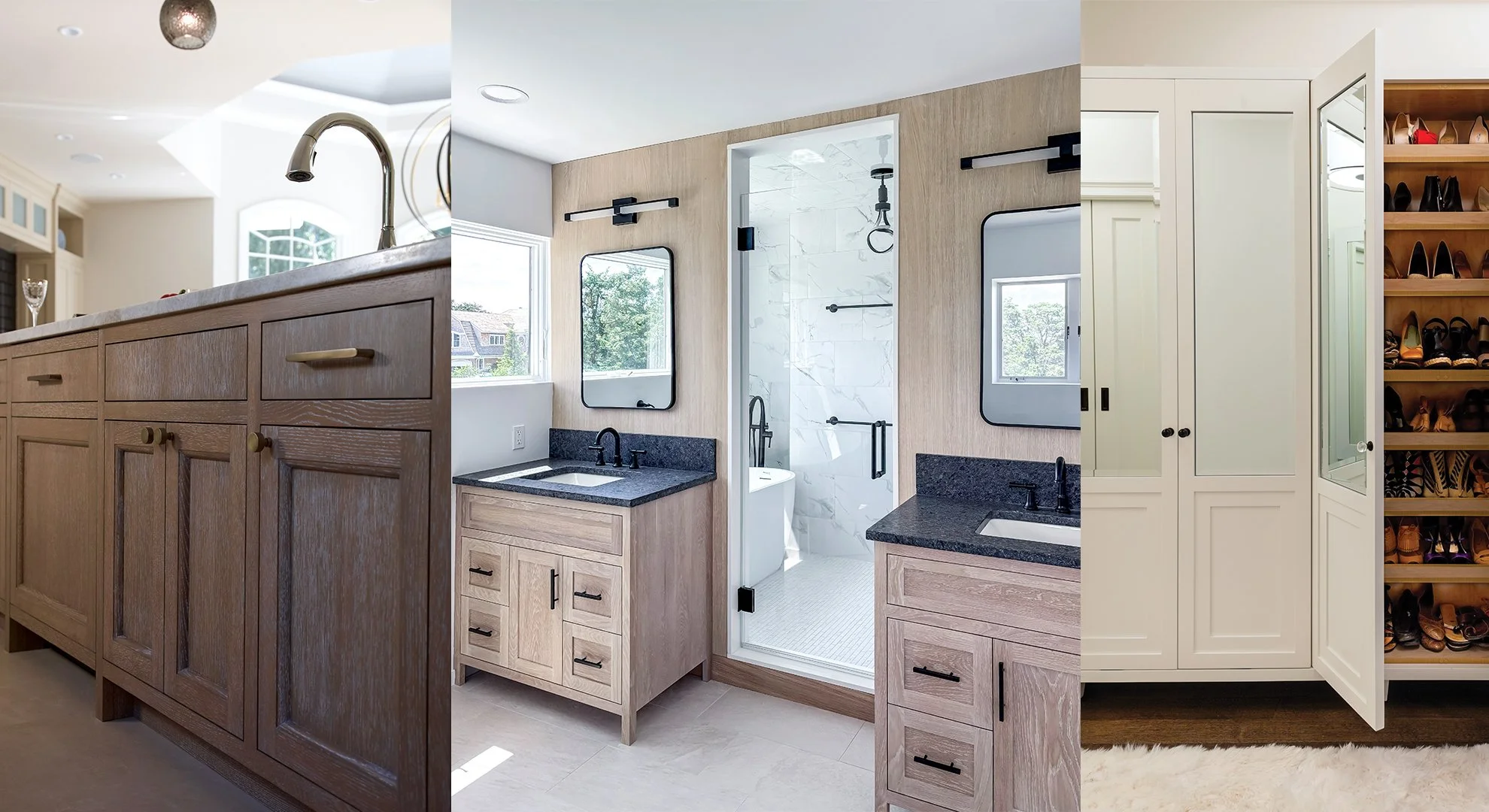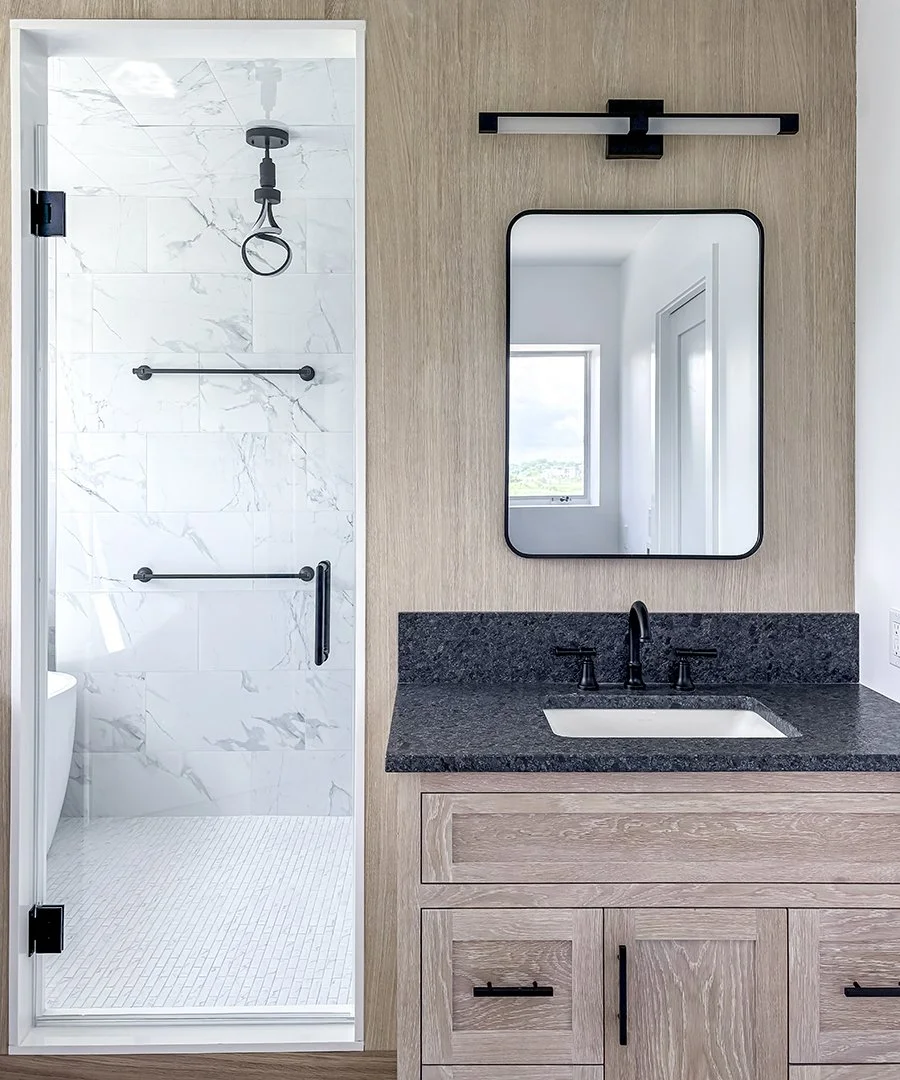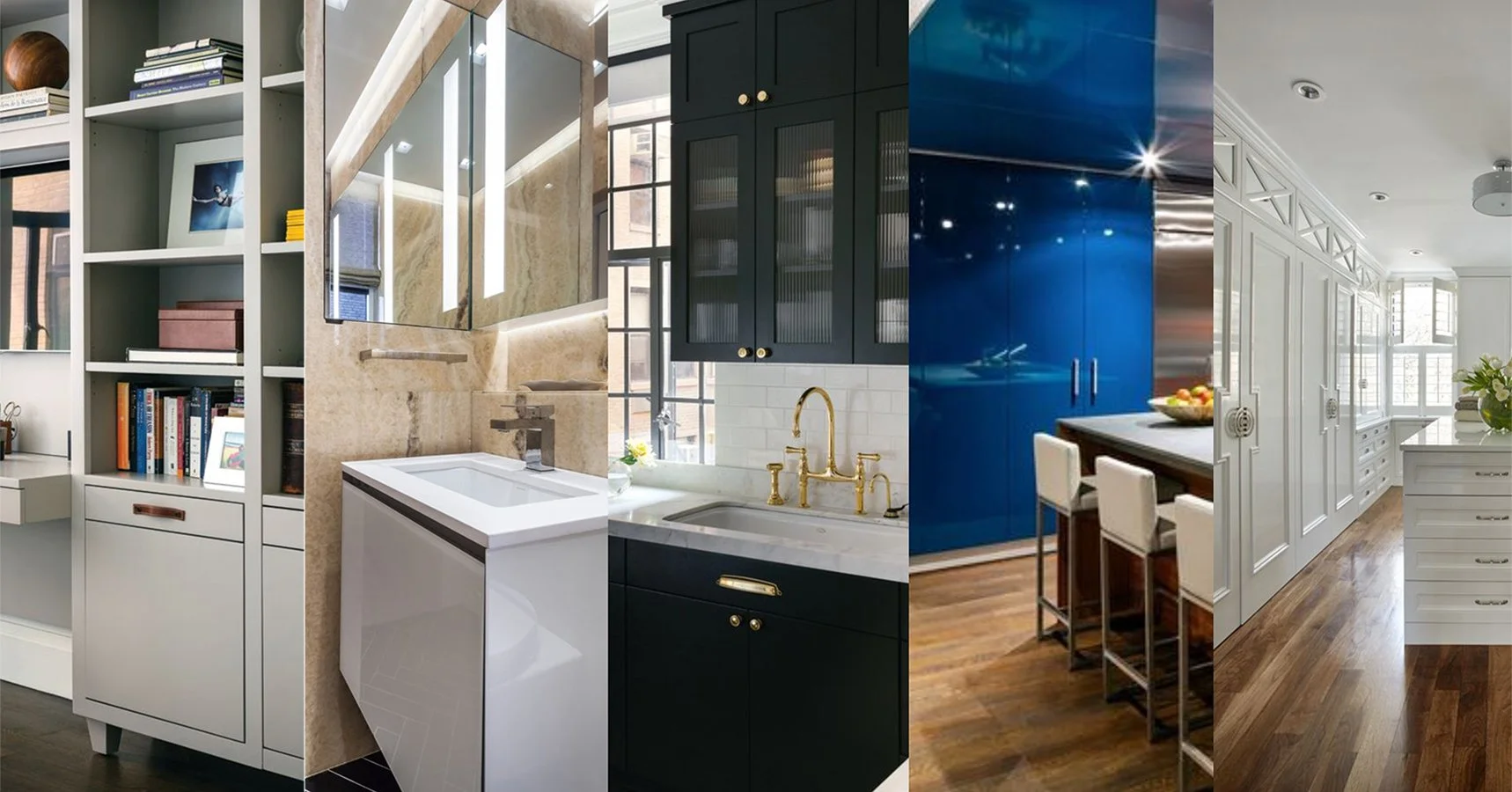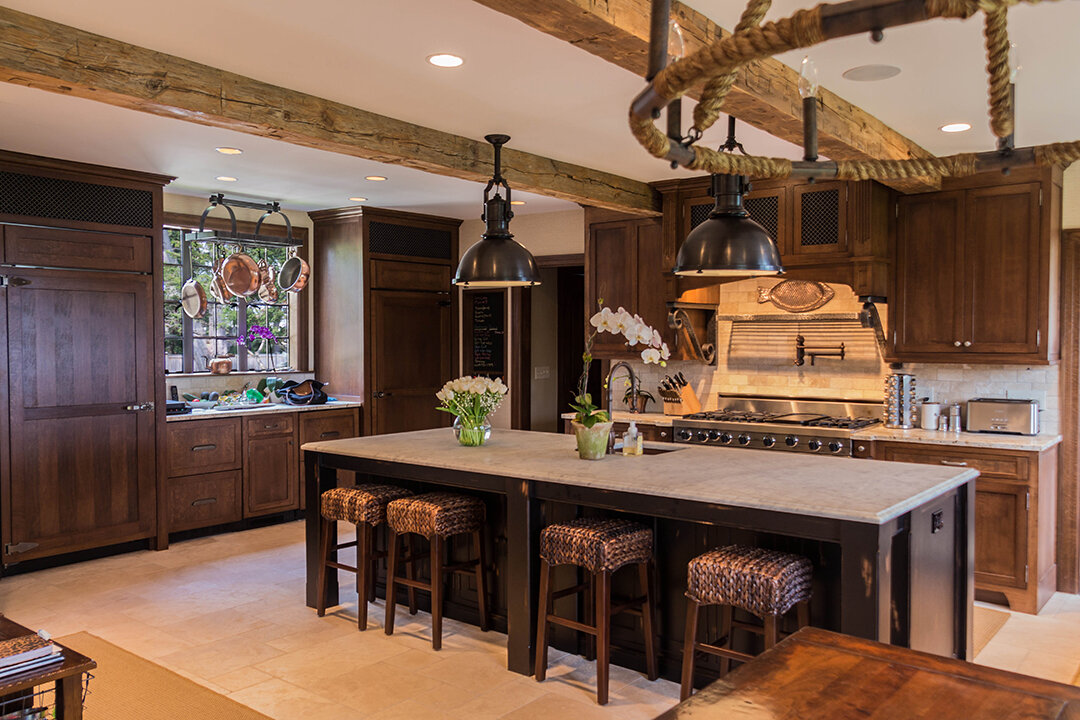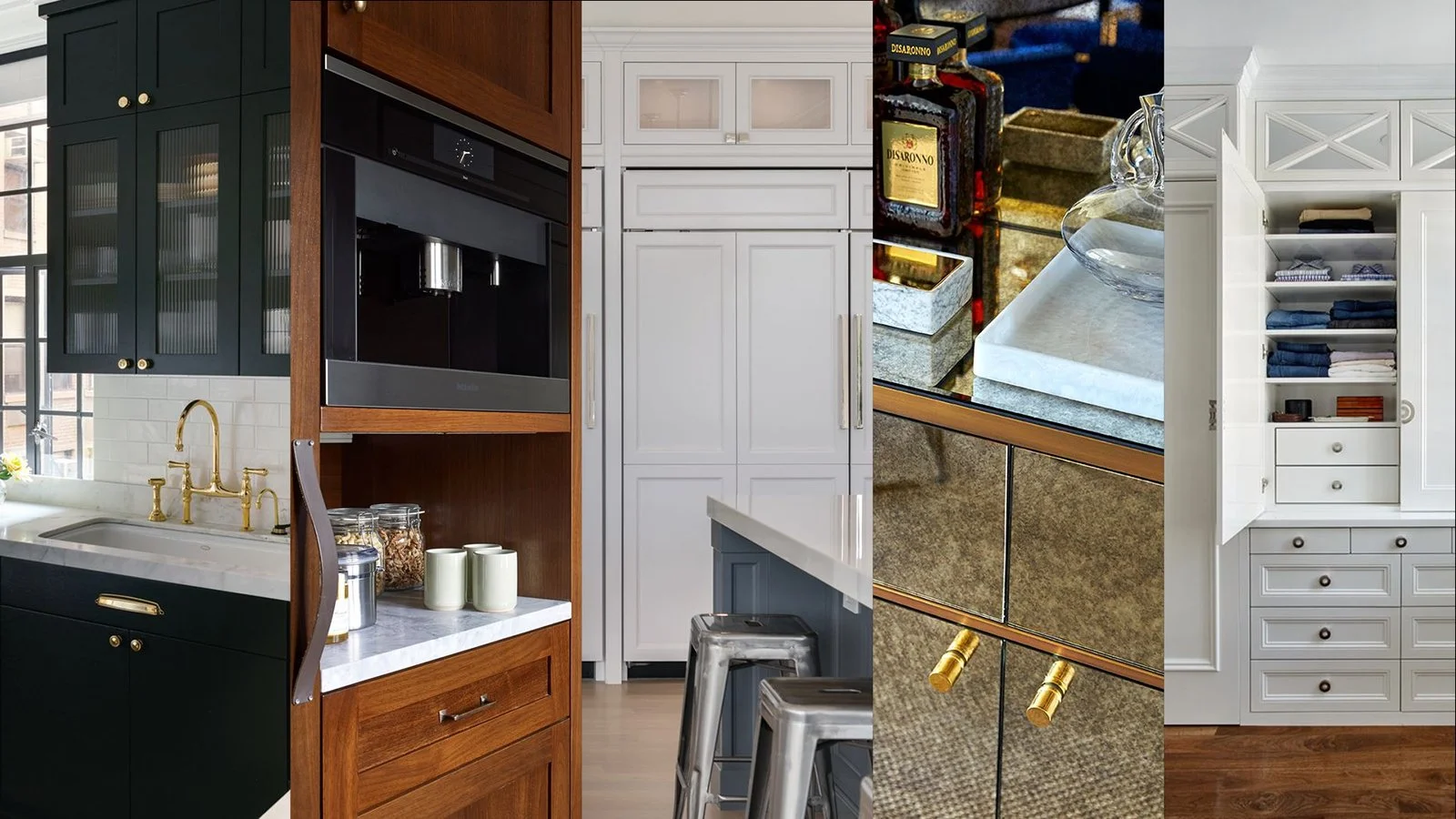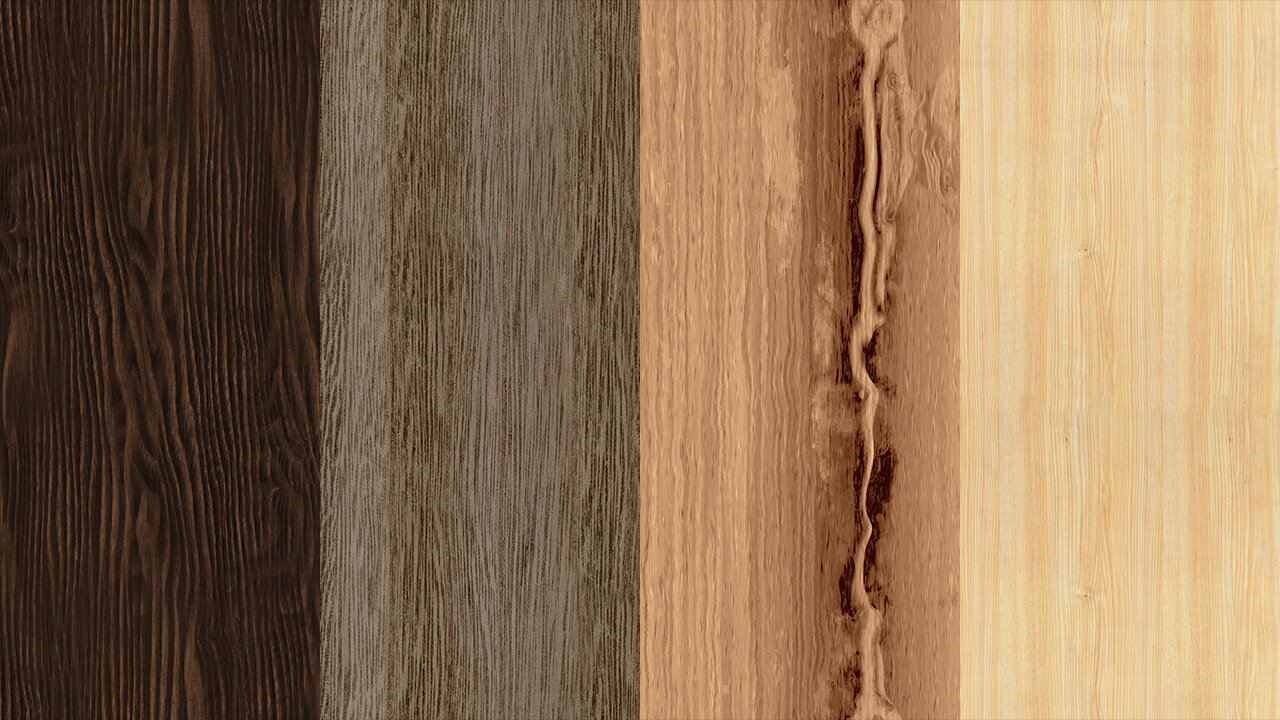Cabinet doors are arguably the most important and most prominent part of your cabinetry. They’re what you see first and what you touch most often. It’s also the most abused part of any cabinet—getting worn down little by little every time it gets opened, closed, or even occasionally slammed. This is why it’s imperative to have durable cabinet doors.
There are multiple ways to make your door more durable. You can invest in heavy-duty cabinet hinges, or choose solid hardwoods over cheaper materials like MDF and particle board. But for paneled cabinet doors, did you know that the choice of wood joinery also matters?
In this article, we will discuss one of the sturdiest ways to build cabinet door frames: cope and stick construction, and why it’s a smart choice for long-lasting custom cabinetry.
What is a Paneled Cabinet Door?
A paneled cabinet door consists of a panel that is surrounded by a frame, which is made up for rails and stiles. The center panel, which can either be a flat recessed panel or a raised panel, is typically not glued to the frame. It is captured in grooves and “floats” within the frame, allowing it to expand and contract without distorting the door frame. This is one of the most common methods of constructing cabinet doors and is often also referred to as a five-piece door.
Because the panel is simply “floating,” it is the frame that determines the door’s overall strength. There are several ways to join the rails and stiles—such as butt joints, bridle joints, or mortise and tenon—but for cabinet doors, we recommend one in particular: the cope and stick joint.
What is Cope and Stick Construction?
Cope and stick is a time-tested method often found in high-end cabinet doors. The vertical stile is cut with a profile along its inner edge—this is the “stick.” The horizontal rail will meet the stile at a 90-degree angle, and is “coped” or given a cope cut with a matching profile.
This interlocking joint creates a solid connection between the two pieces, helps the frame resist stress, minimize warping, and hold up to years of use. Because the joint also provides a larger surface area for glue, it reinforces the frame even further. This makes cope and stick joinery one of the most durable choices for cabinet door construction.
Close-up detail of how the vertical stile and horizontal rail meet when using a cope and stick connection.
How Does Cope and Stick Compare to Other Joinery Methods?
Of course, cope and stick isn’t the only way to build a cabinet door frame. There are other construction methods out there, each with their own advantages and disadvantages. To help you understand why we prefer cope and stick, let’s take a look at how it compares to some of the most common alternatives.
Cope and Stick vs. Butt Joint
A butt joint is the simplest form of joinery—just two square ends glued or nailed together. It’s a quick and easy method, but that’s all it’s good for. It offers very little added strength, and is prone to loosening over time, especially with frequent use. Definitely not ideal for a cabinet door that gets opened and closed all the time.
In contrast, cope and stick uses interlocking pieces and has a much larger glue surface, resulting in a frame that’s more stable and more durable.
Cope and Stick vs. Mitered Joint
Mitered joints meet at a 45-degree angle, creating a seamless grain pattern that many homeowners find attractive. This is especially true in more contemporary styles. The tradeoff is in construction and durability. The joint is glued end grain to end grain, which is inherently weaker because end grain absorbs glue rather than forming a strong bond. Over time, simple mitered joints also tend to open up at the corners as wood expands and contracts with seasonal changes. There are certainly ways to strengthen the joint, but that further increases complexity and requires a higher degree of precision.
In contrast, cope and stick stays tighter and stronger over time—an important advantage for high-use doors.
Cope and Stick vs. Mortise and Tenon
Mortise and tenon is one of the oldest and strongest woodworking joints. It’s most commonly used for exterior and interior doors due to its extreme durability. The downside is that it’s more labor-intensive and time-consuming to produce. In cabinet doors, this level of strength is usually unnecessary—it’s overbuilt for the task and adds cost without practical benefit.
In contrast, cope and stick construction achieves excellent durability with greater efficiency, making it the more balanced choice for fine cabinetry.
Comparing the Different Cabinet Door Construction Methods
Here’s a quick rundown of the advantages and disadvantages of the different types of joinery used for cabinet doors:
Cope and Stick Joint
Strength & Durability: Strong interlocking joints with large glue surface, resists racking and sagging
Appearance: Classic traditional look
Ease of Construction: Efficient with matched router bits
Drawbacks: Less seamless look compared to mitered joints
Butt Joint
Strength & Durability: Weakest joint, limited strength under stress
Appearance: Plain and simple
Ease of Construction: Easiest to cut; minimal tools needed
Drawbacks: Poor durability; not recommended for high-use cabinetry
Mitered Joint
Strength & Durability: Weaker joint glued at end-grain, prone to seasonal gaps
Appearance: Elegant continuous grain pattern
Ease of Construction: Requires precision cuts and labor intensive
Drawbacks: Corners can open over time; higher risk of failure
Mortise and Tenon Joint
Strength & Durability: Extremely strong; ideal for heavy doors or furniture
Appearance: Traditional look
Ease of Construction: Time-consuming, requires advanced tooling, labor intensive
Drawbacks: Overkill for cabinet doors; adds cost and labor
Bathroom vanity with shaker cabinet doors made using cope and stick construction by Wood & Co.
Why Does Wood & Co. Use Cope and Stick for Custom Cabinetry?
Cope and stick construction is a tried-and-true joinery method for paneled cabinet doors, and it’s one we rely on for good reason. At Wood & Co., we place the highest value on creating cabinetry that lasts for decades, not just years. Our goal is to give our clients peace of mind, knowing their investment in custom cabinetry is one that will stand the test of time.
Beyond durability, cope and stick has a timeless, versatile appeal. This traditional joinery complements a wide range of styles—from classic kitchens to transitional spaces to even contemporary homes in the Hamptons and on Long Island. This makes it a natural choice for luxury cabinetry, where strength and style go hand in hand.
Cope and stick joints strike the ideal balance: it provides the strength homeowners need, the craftsmanship they expect, and the refined look that elevates their spaces.

